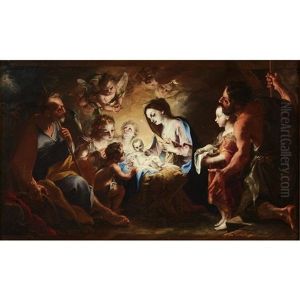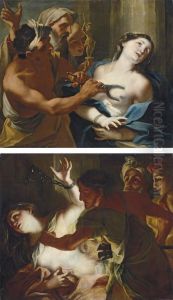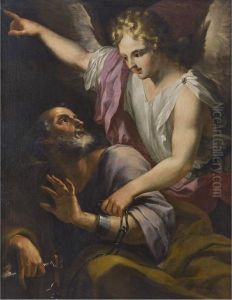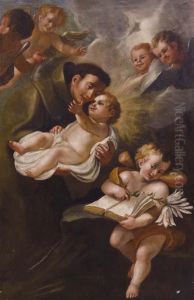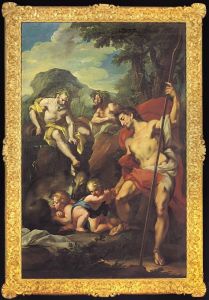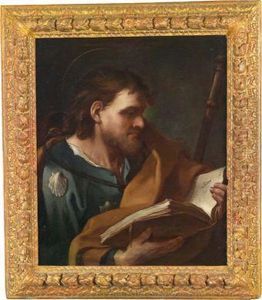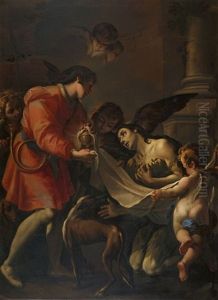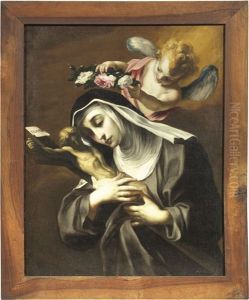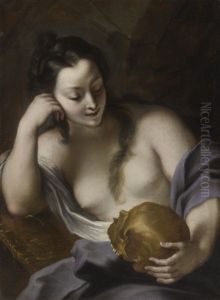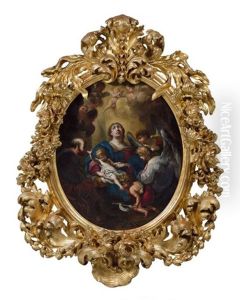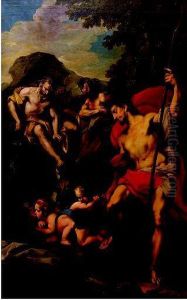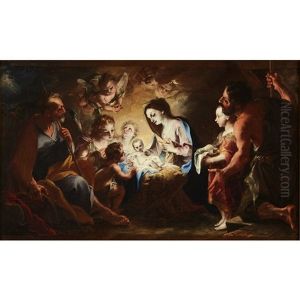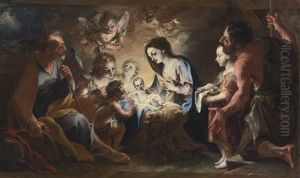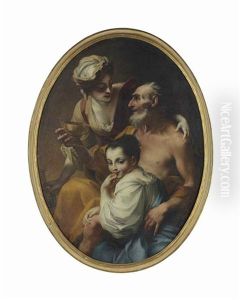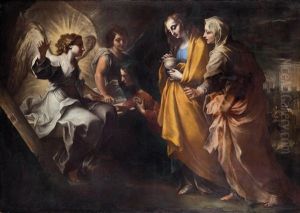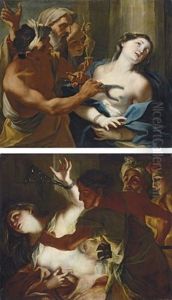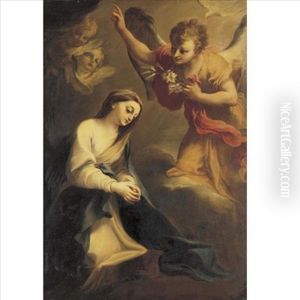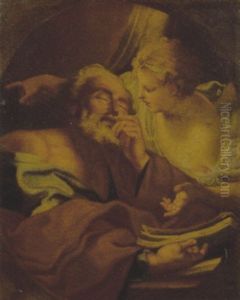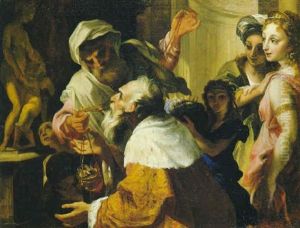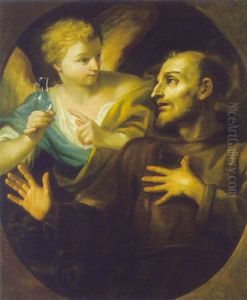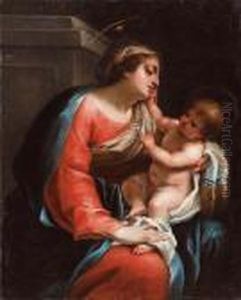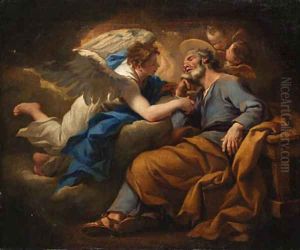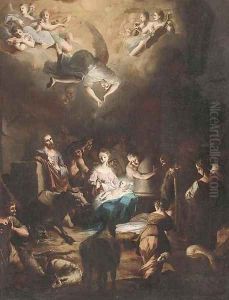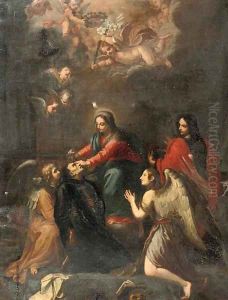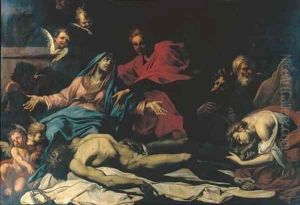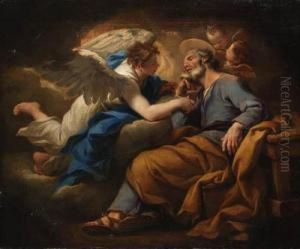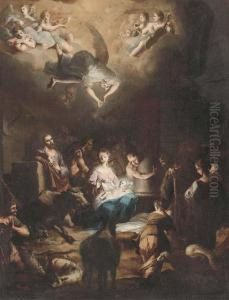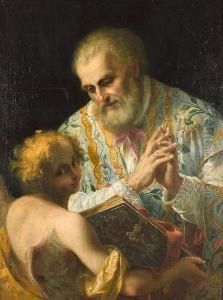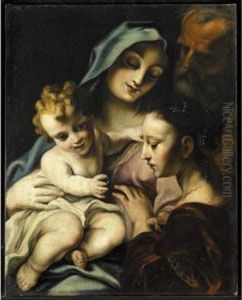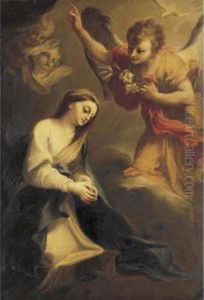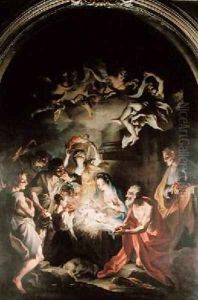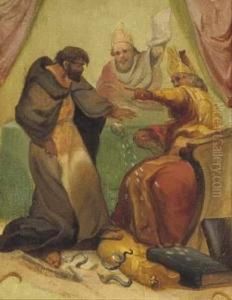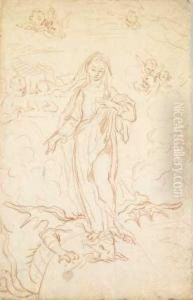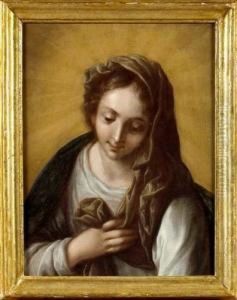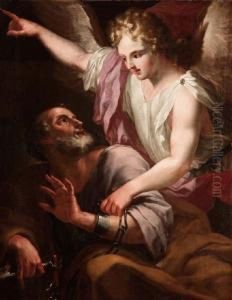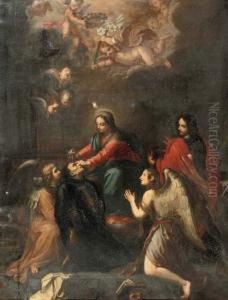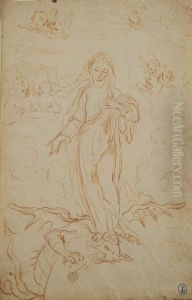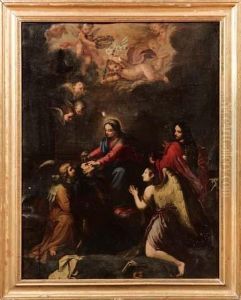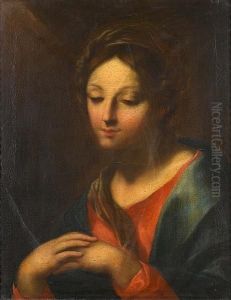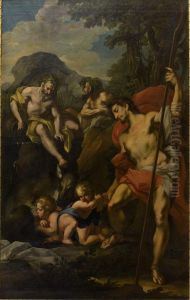Stefano Maria Legnani Paintings
Stefano Maria Legnani, also known as Legnanino, was an Italian painter of the Baroque period, active mainly in his native Milan as well as in the Piedmont region. Born in 1661 in Milan, Legnani was part of a period rich in artistic expression, which was characterized by dramatic intensity, strong contrasts of light and shadow, and a vivid use of color that are hallmarks of the Baroque style.
Legnani trained under the guidance of prominent artists such as Ercole Procaccini the Younger and Filippo Abbiati. His style was influenced by the great masters of his time, including the works of the renowned painter Carlo Maratta, whom he studied and whose classical approach can be seen reflected in Legnani's own compositions.
Throughout his career, Legnani painted a number of frescoes and altarpieces that showcased his skill in handling large-scale compositions and his ability to imbue his subjects with a sense of grandeur and emotional depth. He was particularly noted for his fresco work, which can be found decorating the walls and ceilings of various churches and buildings in Northern Italy. Among his notable works are the frescoes in the cupola of San Gaudenzio in Novara and the ceiling of the church of San Barnaba in Milan.
Legnani's work was well received in his lifetime, and he was commissioned by various religious and secular patrons who sought his ability to create visually compelling and spiritually uplifting works. Despite his success, however, he did not establish a lasting school or a significant following, and his fame dwindled after his death in 1713.
Today, Stefano Maria Legnani is recognized as an important figure in the Lombard painting tradition of the late 17th and early 18th centuries. His contribution to the Baroque movement, though not as widely known as some of his contemporaries, reflects the rich artistic environment of the period and provides insight into the regional variations of the style that flourished throughout Italy during his lifetime.
